Codruta O. Ancuti
NH-HAZE: An Image Dehazing Benchmark with Non-Homogeneous Hazy and Haze-Free Images
May 07, 2020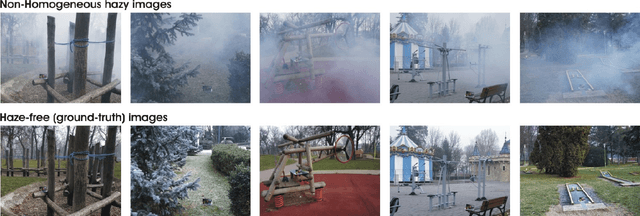

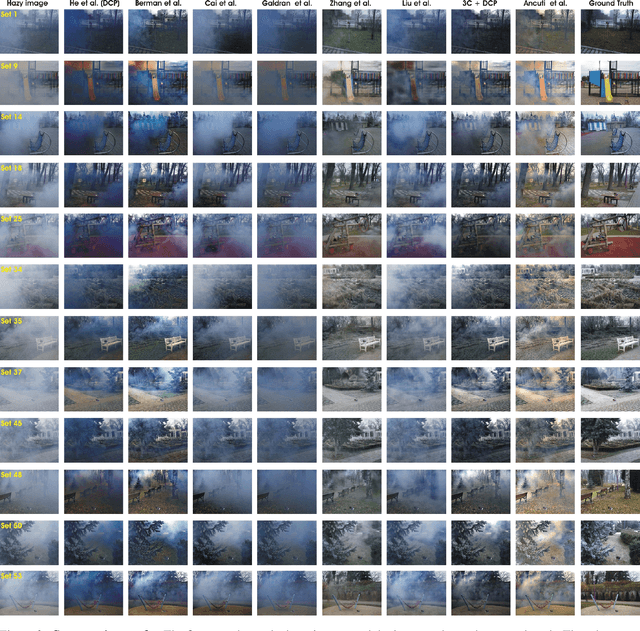

Abstract:Image dehazing is an ill-posed problem that has been extensively studied in the recent years. The objective performance evaluation of the dehazing methods is one of the major obstacles due to the lacking of a reference dataset. While the synthetic datasets have shown important limitations, the few realistic datasets introduced recently assume homogeneous haze over the entire scene. Since in many real cases haze is not uniformly distributed we introduce NH-HAZE, a non-homogeneous realistic dataset with pairs of real hazy and corresponding haze-free images. This is the first non-homogeneous image dehazing dataset and contains 55 outdoor scenes. The non-homogeneous haze has been introduced in the scene using a professional haze generator that imitates the real conditions of hazy scenes. Additionally, this work presents an objective assessment of several state-of-the-art single image dehazing methods that were evaluated using NH-HAZE dataset.
NTIRE 2020 Challenge on NonHomogeneous Dehazing
May 07, 2020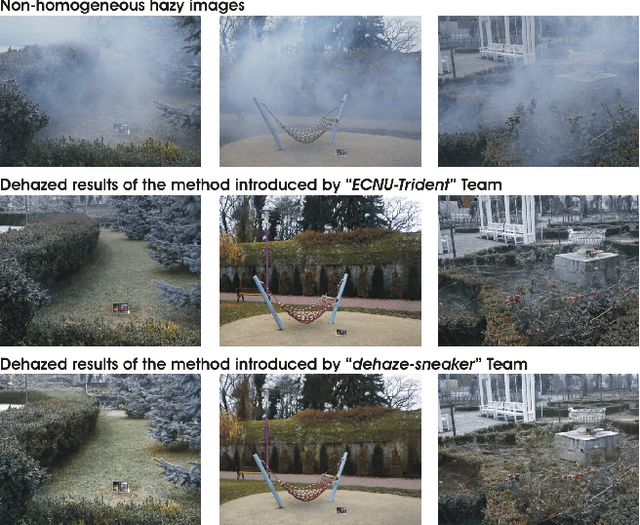
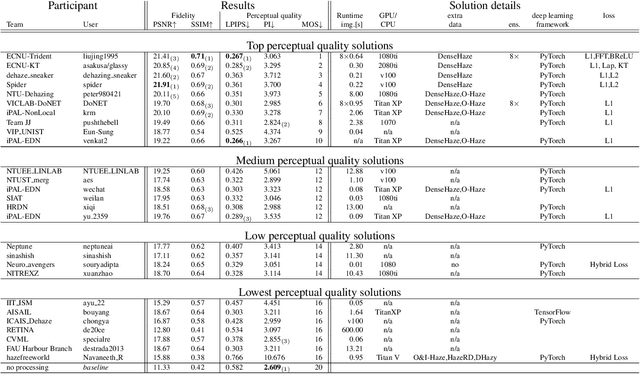
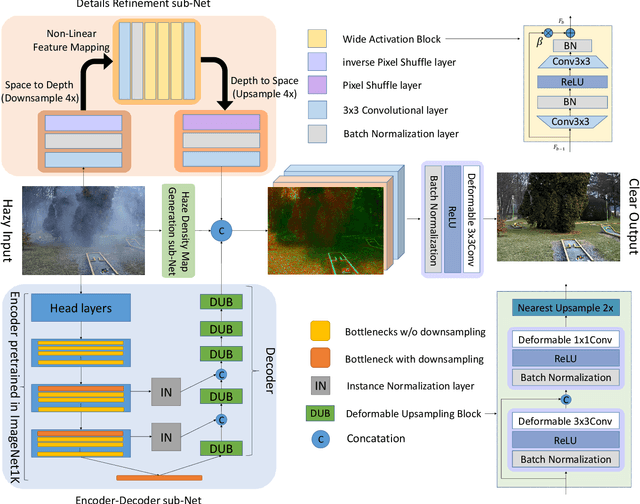
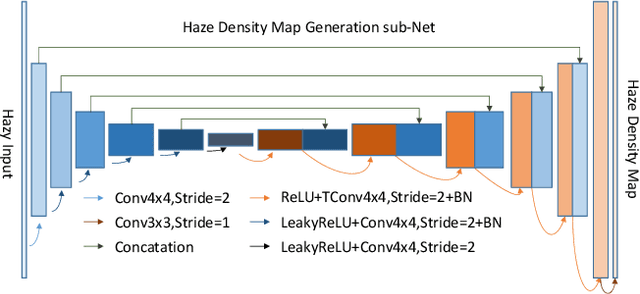
Abstract:This paper reviews the NTIRE 2020 Challenge on NonHomogeneous Dehazing of images (restoration of rich details in hazy image). We focus on the proposed solutions and their results evaluated on NH-Haze, a novel dataset consisting of 55 pairs of real haze free and nonhomogeneous hazy images recorded outdoor. NH-Haze is the first realistic nonhomogeneous haze dataset that provides ground truth images. The nonhomogeneous haze has been produced using a professional haze generator that imitates the real conditions of haze scenes. 168 participants registered in the challenge and 27 teams competed in the final testing phase. The proposed solutions gauge the state-of-the-art in image dehazing.
Dense Haze: A benchmark for image dehazing with dense-haze and haze-free images
Apr 05, 2019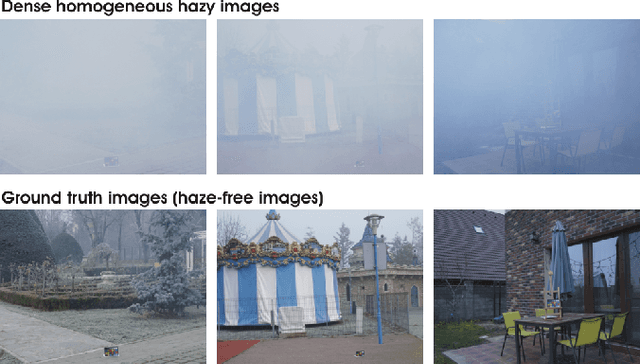
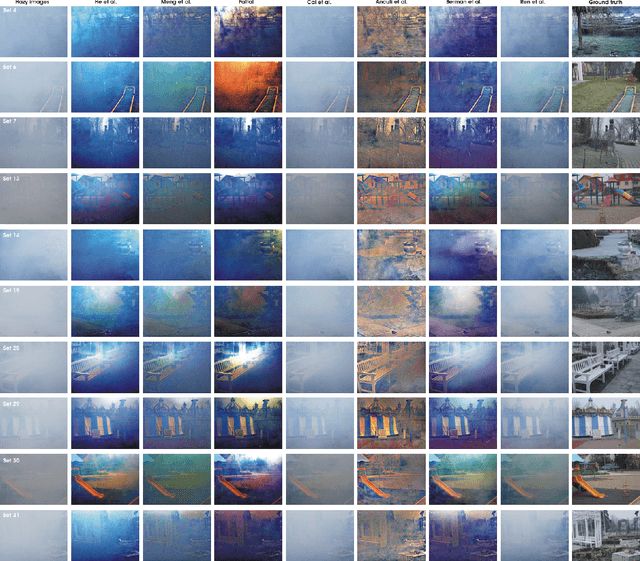


Abstract:Single image dehazing is an ill-posed problem that has recently drawn important attention. Despite the significant increase in interest shown for dehazing over the past few years, the validation of the dehazing methods remains largely unsatisfactory, due to the lack of pairs of real hazy and corresponding haze-free reference images. To address this limitation, we introduce Dense-Haze - a novel dehazing dataset. Characterized by dense and homogeneous hazy scenes, Dense-Haze contains 33 pairs of real hazy and corresponding haze-free images of various outdoor scenes. The hazy scenes have been recorded by introducing real haze, generated by professional haze machines. The hazy and haze-free corresponding scenes contain the same visual content captured under the same illumination parameters. Dense-Haze dataset aims to push significantly the state-of-the-art in single-image dehazing by promoting robust methods for real and various hazy scenes. We also provide a comprehensive qualitative and quantitative evaluation of state-of-the-art single image dehazing techniques based on the Dense-Haze dataset. Not surprisingly, our study reveals that the existing dehazing techniques perform poorly for dense homogeneous hazy scenes and that there is still much room for improvement.
O-HAZE: a dehazing benchmark with real hazy and haze-free outdoor images
Apr 13, 2018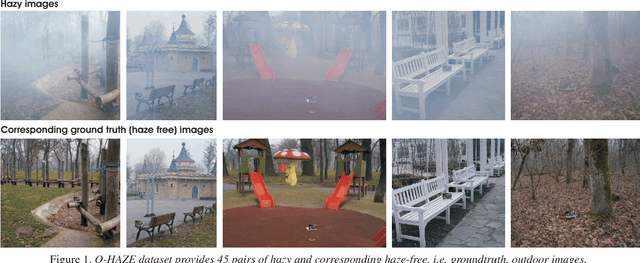



Abstract:Haze removal or dehazing is a challenging ill-posed problem that has drawn a significant attention in the last few years. Despite this growing interest, the scientific community is still lacking a reference dataset to evaluate objectively and quantitatively the performance of proposed dehazing methods. The few datasets that are currently considered, both for assessment and training of learning-based dehazing techniques, exclusively rely on synthetic hazy images. To address this limitation, we introduce the first outdoor scenes database (named O-HAZE) composed of pairs of real hazy and corresponding haze-free images. In practice, hazy images have been captured in presence of real haze, generated by professional haze machines, and OHAZE contains 45 different outdoor scenes depicting the same visual content recorded in haze-free and hazy conditions, under the same illumination parameters. To illustrate its usefulness, O-HAZE is used to compare a representative set of state-of-the-art dehazing techniques, using traditional image quality metrics such as PSNR, SSIM and CIEDE2000. This reveals the limitations of current techniques, and questions some of their underlying assumptions.
I-HAZE: a dehazing benchmark with real hazy and haze-free indoor images
Apr 13, 2018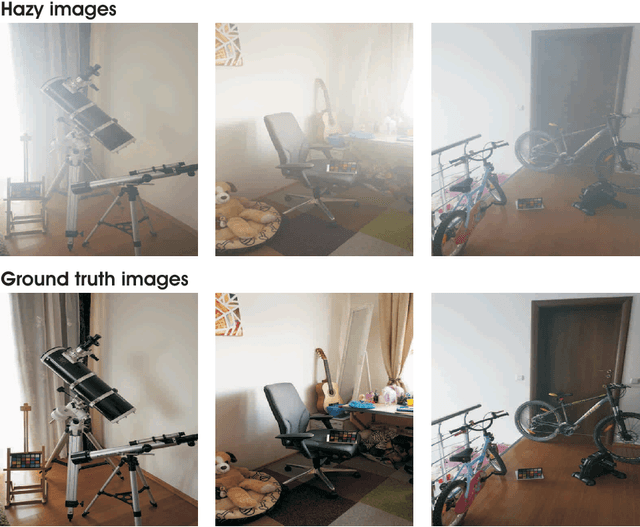
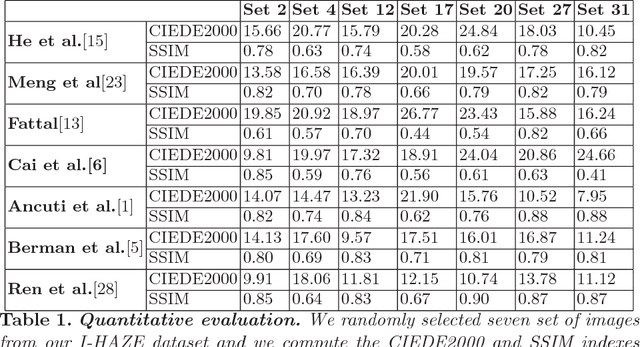
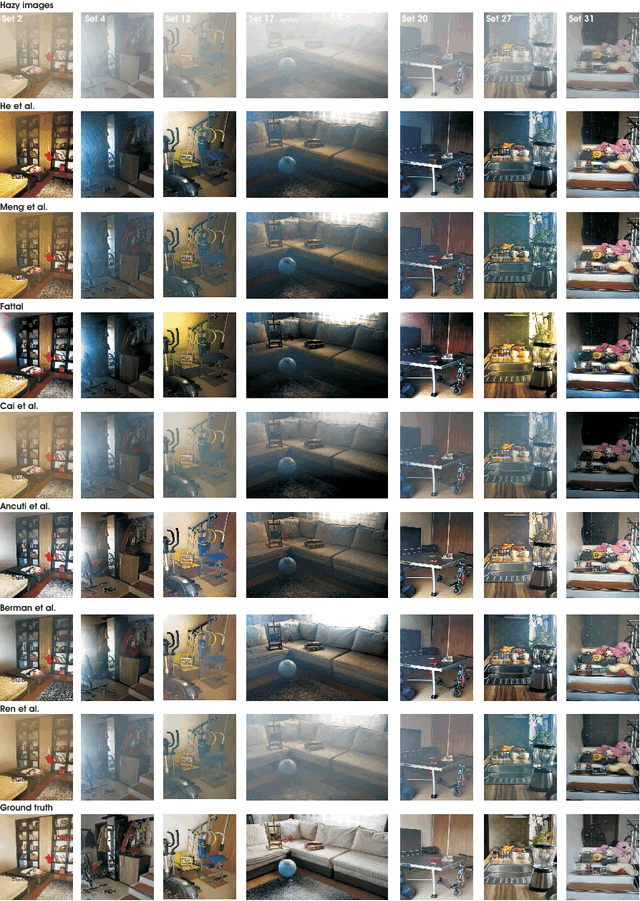
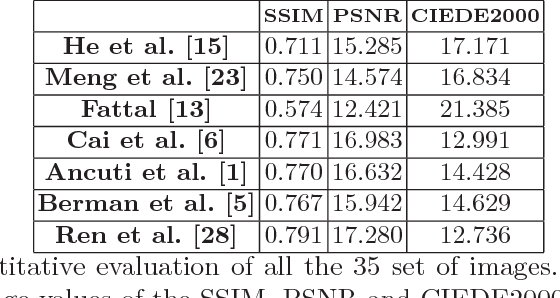
Abstract:Image dehazing has become an important computational imaging topic in the recent years. However, due to the lack of ground truth images, the comparison of dehazing methods is not straightforward, nor objective. To overcome this issue we introduce a new dataset -named I-HAZE- that contains 35 image pairs of hazy and corresponding haze-free (ground-truth) indoor images. Different from most of the existing dehazing databases, hazy images have been generated using real haze produced by a professional haze machine. For easy color calibration and improved assessment of dehazing algorithms, each scene include a MacBeth color checker. Moreover, since the images are captured in a controlled environment, both haze-free and hazy images are captured under the same illumination conditions. This represents an important advantage of the I-HAZE dataset that allows us to objectively compare the existing image dehazing techniques using traditional image quality metrics such as PSNR and SSIM.
 Add to Chrome
Add to Chrome Add to Firefox
Add to Firefox Add to Edge
Add to Edge